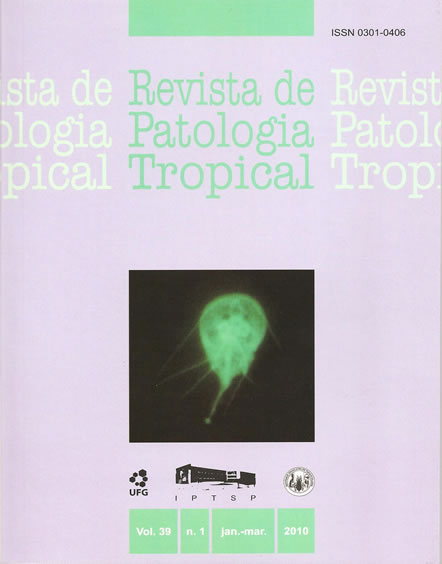Intestinal parasites and socioeconomic and sanitary conditions in a quilombola comunity of the semi-arid region in Bahia, Brazil
DOI:
https://doi.org/10.5216/rpt.v39i1.9498Keywords:
Intestinal parasites, Remaining Quilombolas community, Sanitary profiles, Basic sanitation.Abstract
Intestinal parasites have been exhaustively studied in different communities inBrazil throughout the years although data concerning remaining “quilombolas”
(descendants of former black slaves that escaped to hiding places, the quilombos)
communities are poor. The current study aimed to investigate the frequency of
intestinal parasites and potential risk factors for these infections in children and
teenagers (2-14 years old), living in a remaining quilombola community in Bahia.
Stool samples were collected and standardized questionnaires were applied to 348
subjects. 276 (79.3%) were infected by protozoa or helminth parasites. In relation
to socioeconomic characteristics, of 180 interviewed families, 122 (67%) reported
to live with a half minimum salary, most of them (61%) have no treated water, 51%
have no toilet in their houses. Sewage system was absent in 96.6% of the houses.
These results show the high frequency of intestinal parasites in this population, once
they live in precarious socioeconomic and environmental conditions, highlighting
the immediate need of governmental interventions on this community.
Downloads
Downloads
Published
How to Cite
Issue
Section
License
The manuscript submission must be accompanied by a letter signed by all authors stating the full name and email address, confirming that the material has not been published or is under consideration for publication elsewhere, and agreeing to transfer copyright in all media and formats for Journal of Tropical Pathology. The authors will not be paid for published articles. They are solely responsible for the content of those articles, even if the Editor holds the right to adjust them to the norms of the journal.
The reviewers will not be paid for the peer review process.

